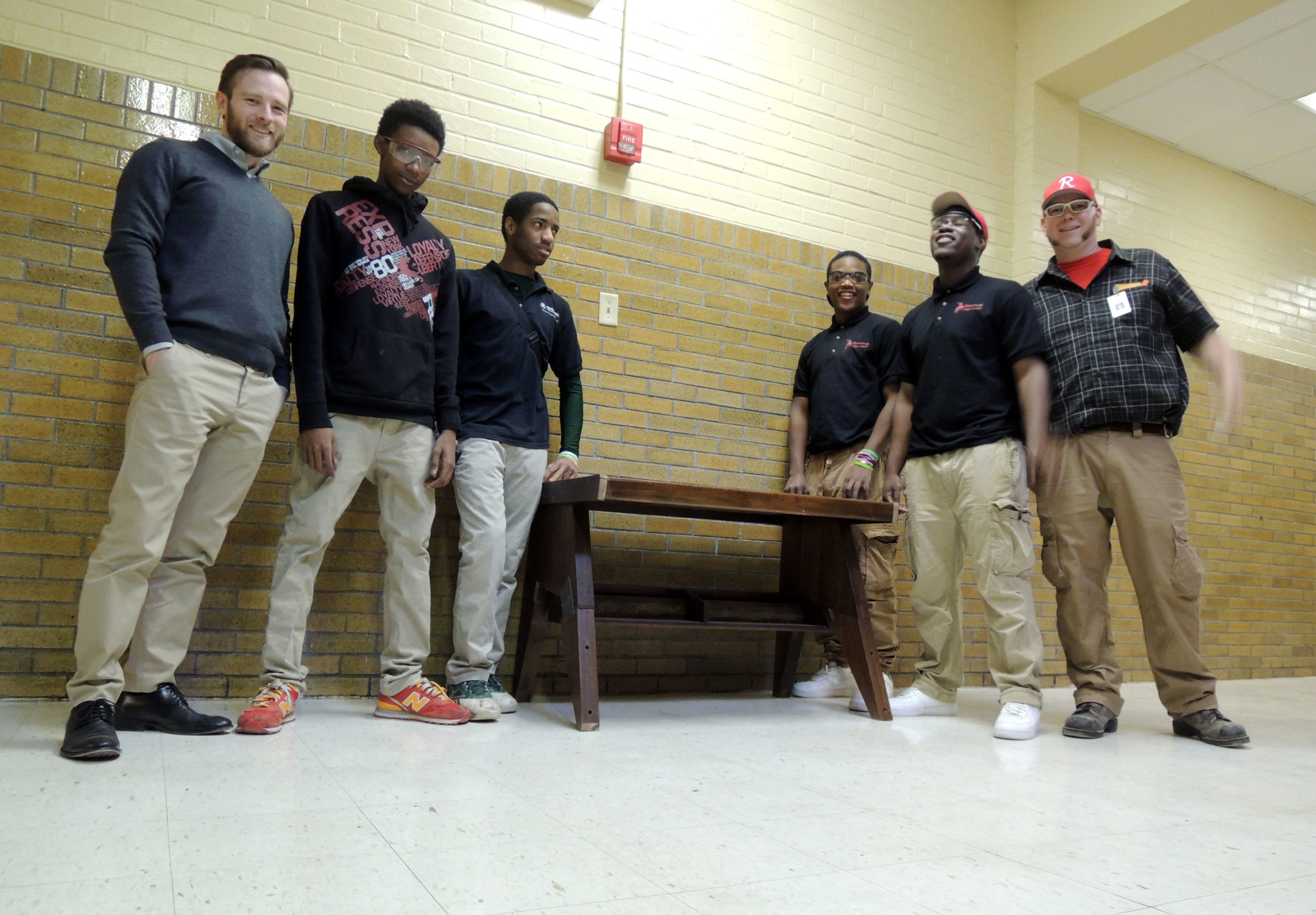
Musings on Reusing Pews
In August of this year, JEMA was approached by the shop teacher at Roosevelt High School, Bart Adastra, who posed an interesting question: “does anyone want to help my class transform some old pews into bookshelves for kids?”
The idea to transform pews into bookshelves came from Karen Kalish, a local retired teacher who runs a program called HOME WORKS!, which encourages teachers to visit with elementary school students at home. During those visits, the teachers noticed that many of the homes were missing bookshelves, which recent studies have shown to be directly correlated with poor performance in school.
When Karen became aware that Temple Israel was renovating their space, she arranged to have 79 pews sent to Roosevelt, where Bart’s shop class would use them to construct bookshelves for children in the HOME WORKS! program. When Bart reached out to JEMA, the pews were already dismantled and stacked in storage at the school, awaiting new life and purpose.

As someone interested in upcycled furniture design, I jumped on the opportunity to meet with Bart and begin brainstorming ideas. Having previously designed a community workshop that focused on transforming industrial waste into home furniture, I was immediately intrigued by this opportunity to help breathe new life into old materials. The Post-Dispatch even ran a small story when the pews were delivered.
When I met with Bart, his class of about 15 seniors showed me the bookshelf prototypes they had created, and there were some really strong ideas. Since many of the Roosevelt High School students come from underprivileged backgrounds themselves, they recognized that the children receiving the bookshelves would also likely need a place to do homework. For this reason, most of their designs incorporated a desk and a bookshelf into one piece of furniture.
One of the bookshelf/desk combinations was incredibly solid, but it was too heavy for a single teacher to deliver to a student’s home. Another idea looked at a folding table that could slide under a student’s bed when not in use. The one thing I noticed about all of the ideas, however, was that each one relied on new lumber to some extent. The design challenge became clear–to help Bart’s class develop a bookshelf/desk that utilized as much of the pews as possible without relying on new materials.
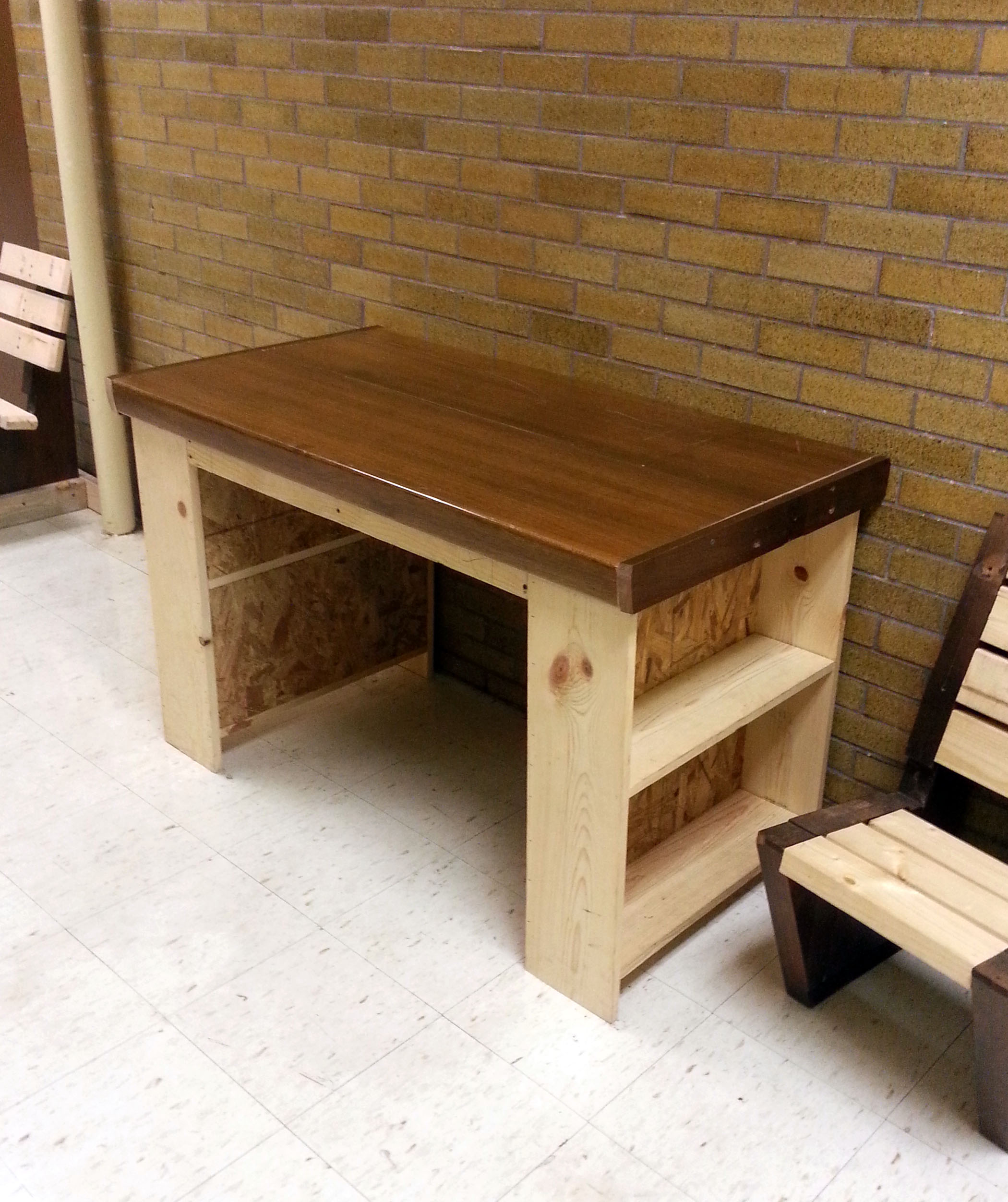

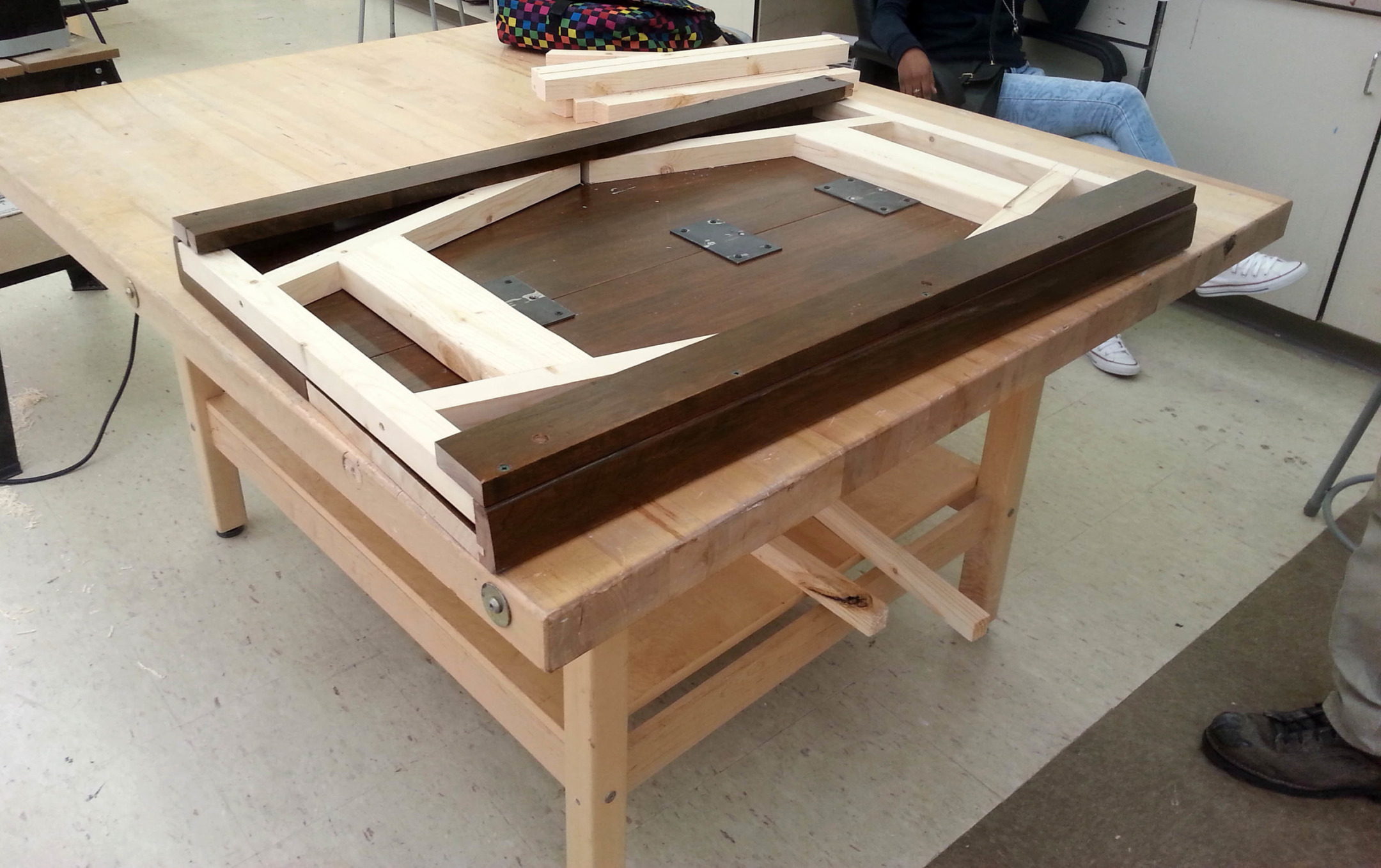


Even though new lumber from Home Depot can be easier to use, the students were up for the challenge of making the design work with just the pieces we had. Over the next few weeks we sketched out some ideas and eventually developed a prototype that used ONLY material that had been salvaged from the pews (including hardware). The backs of the pews became a desk surface, the ends of the pews were turned upside-down to become legs, and the hymnal shelves became a bookshelf underneath the desk.
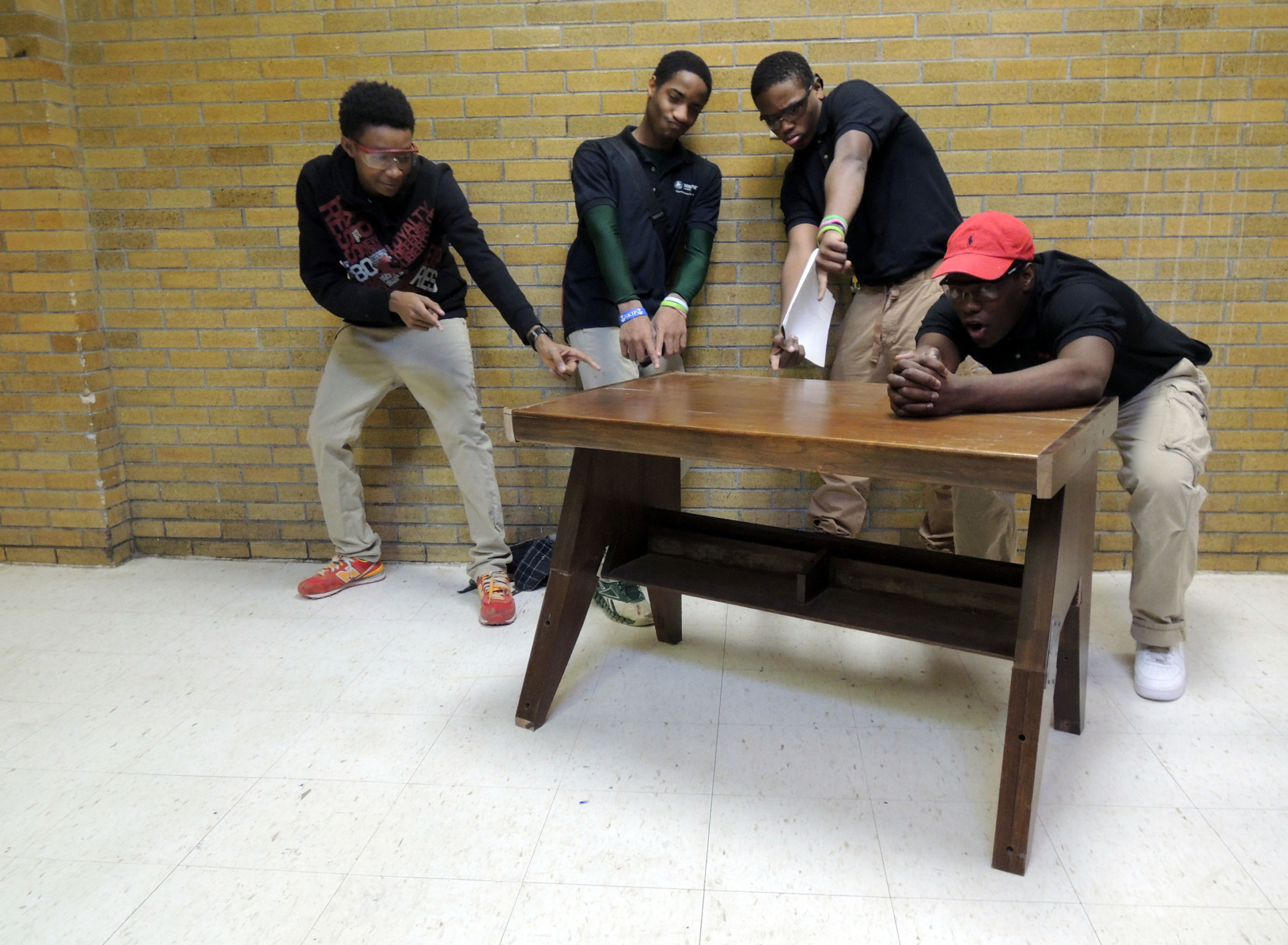
After a few more tweaks, the design was finalized. Bart showed the students how to set up jigs for the table saw, how to measure the angles of the cuts, and how to pre-drill the holes for simple assembly using only a screwdriver. The desk was deemed a success when a 6’4” student sat on it and proclaimed that it was solid. His own desk at home had failed that same test. The desk/bookshelves are now being assembled by the class so that they can be tested for durability and then delivered to local families.
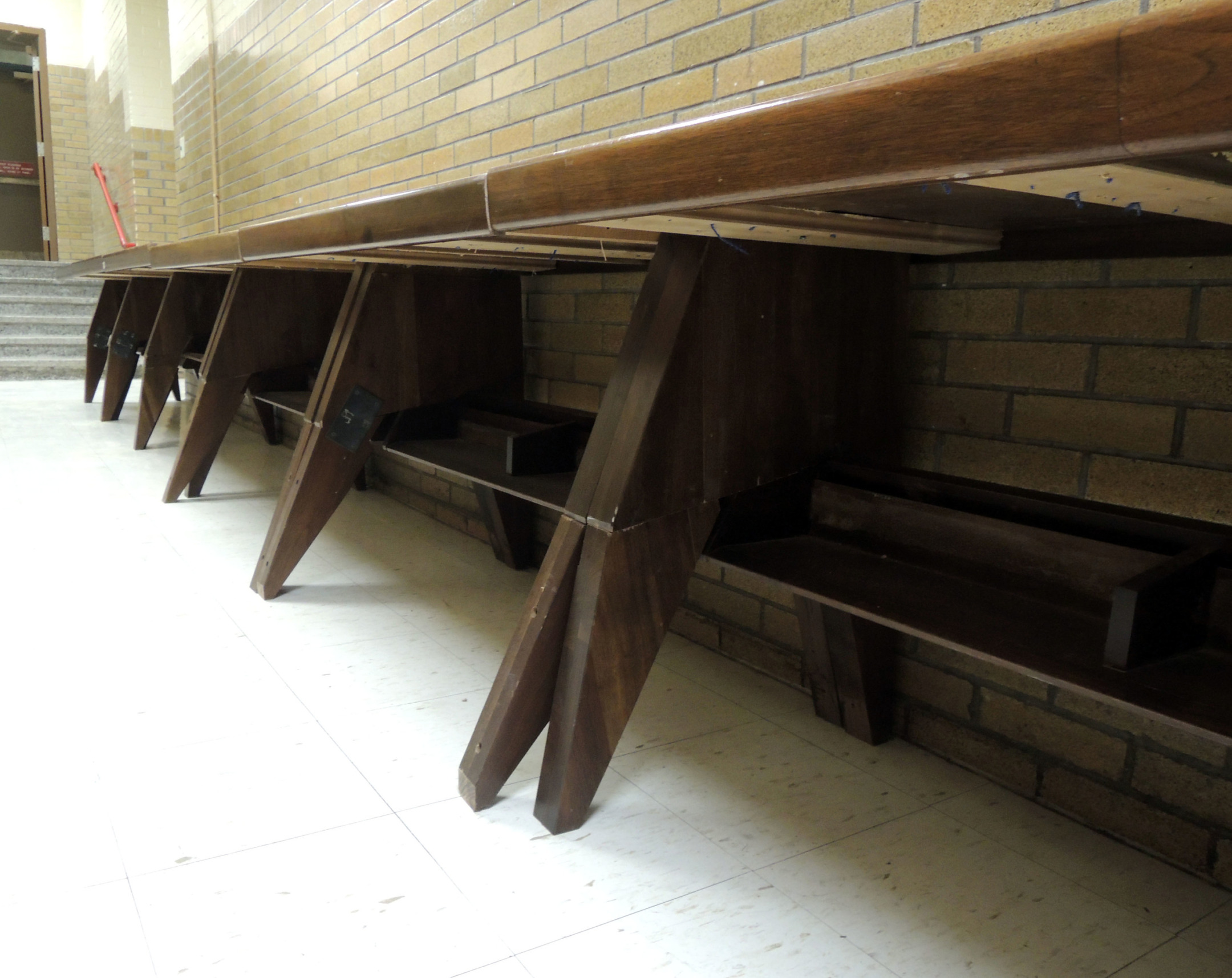
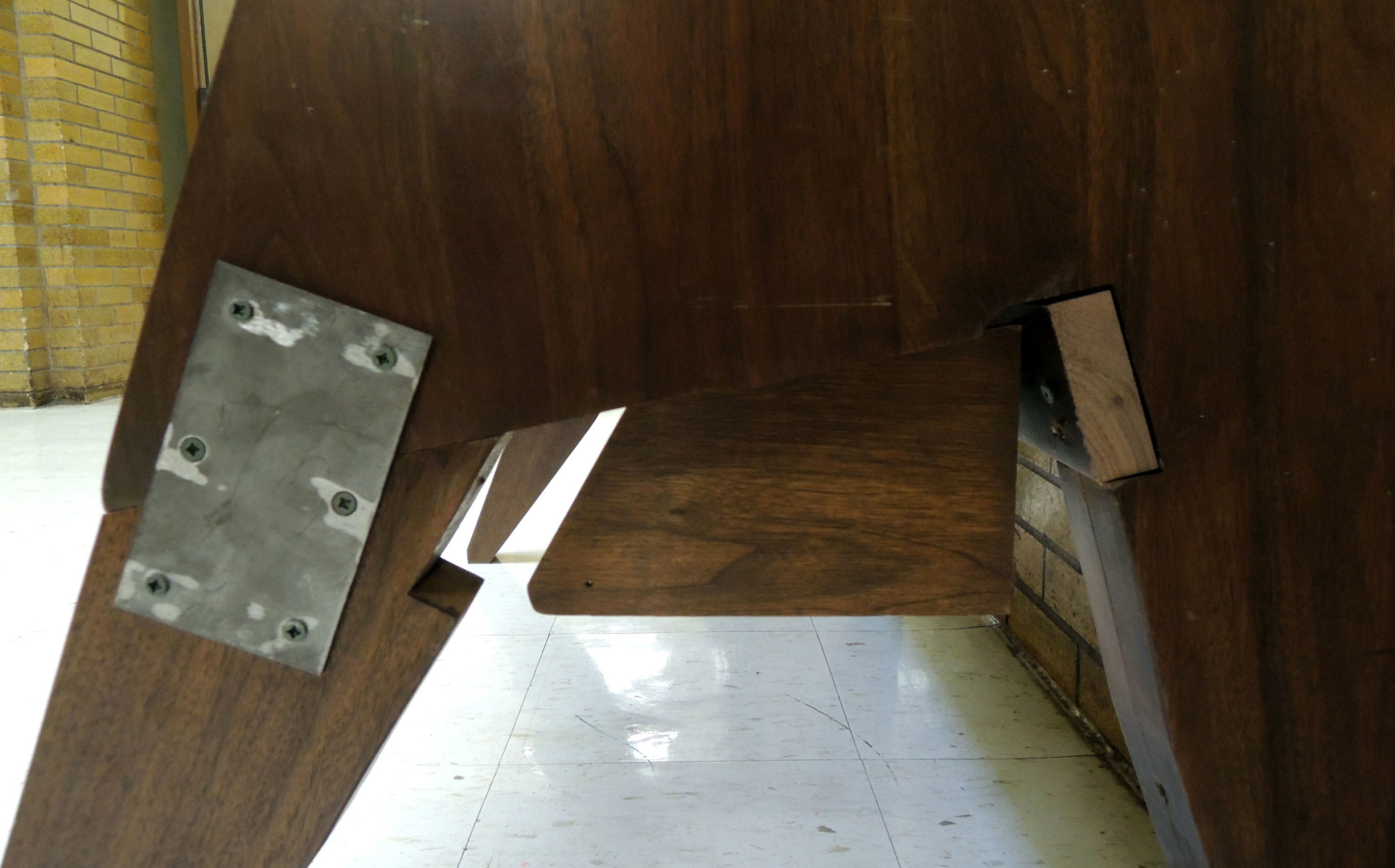
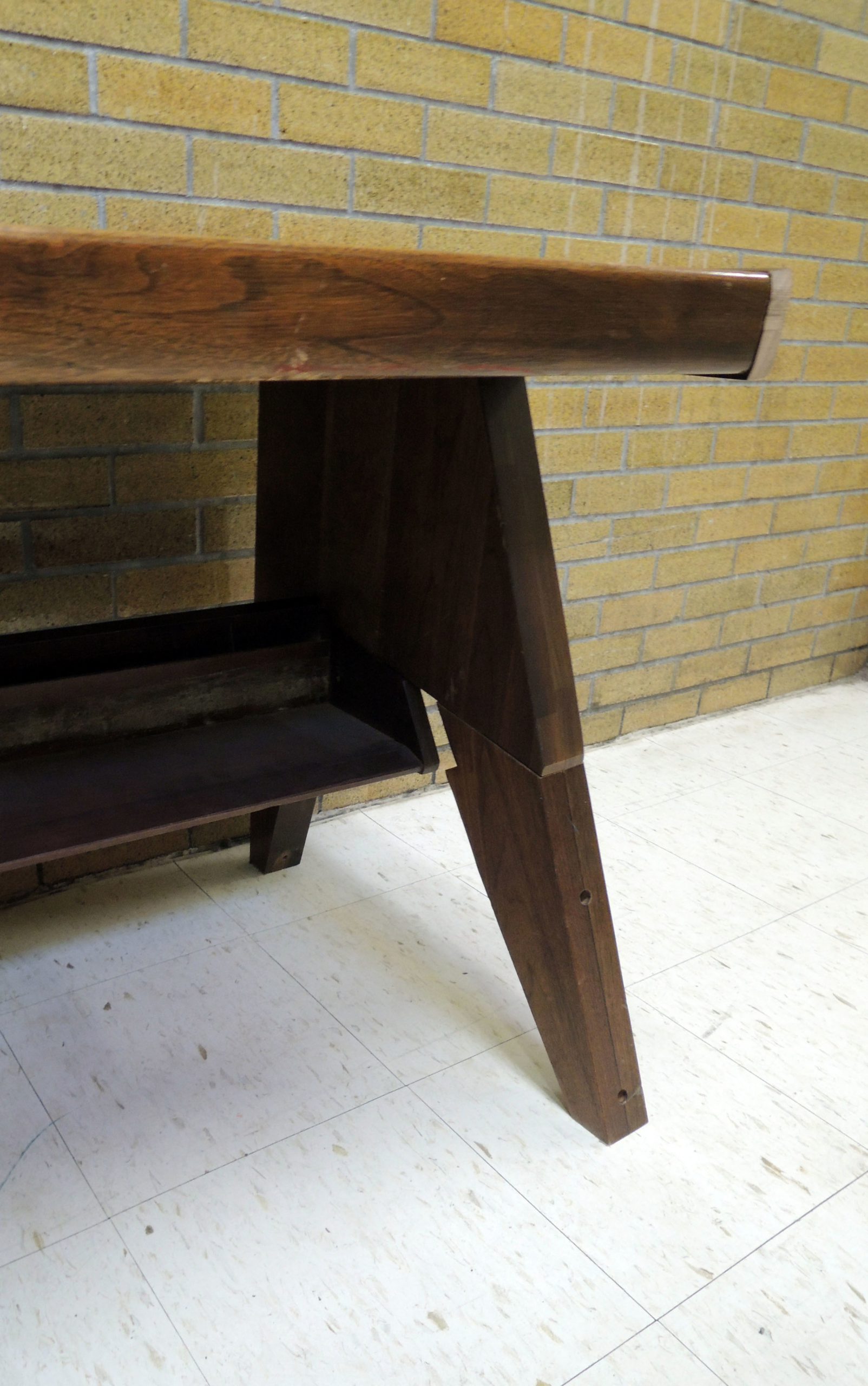

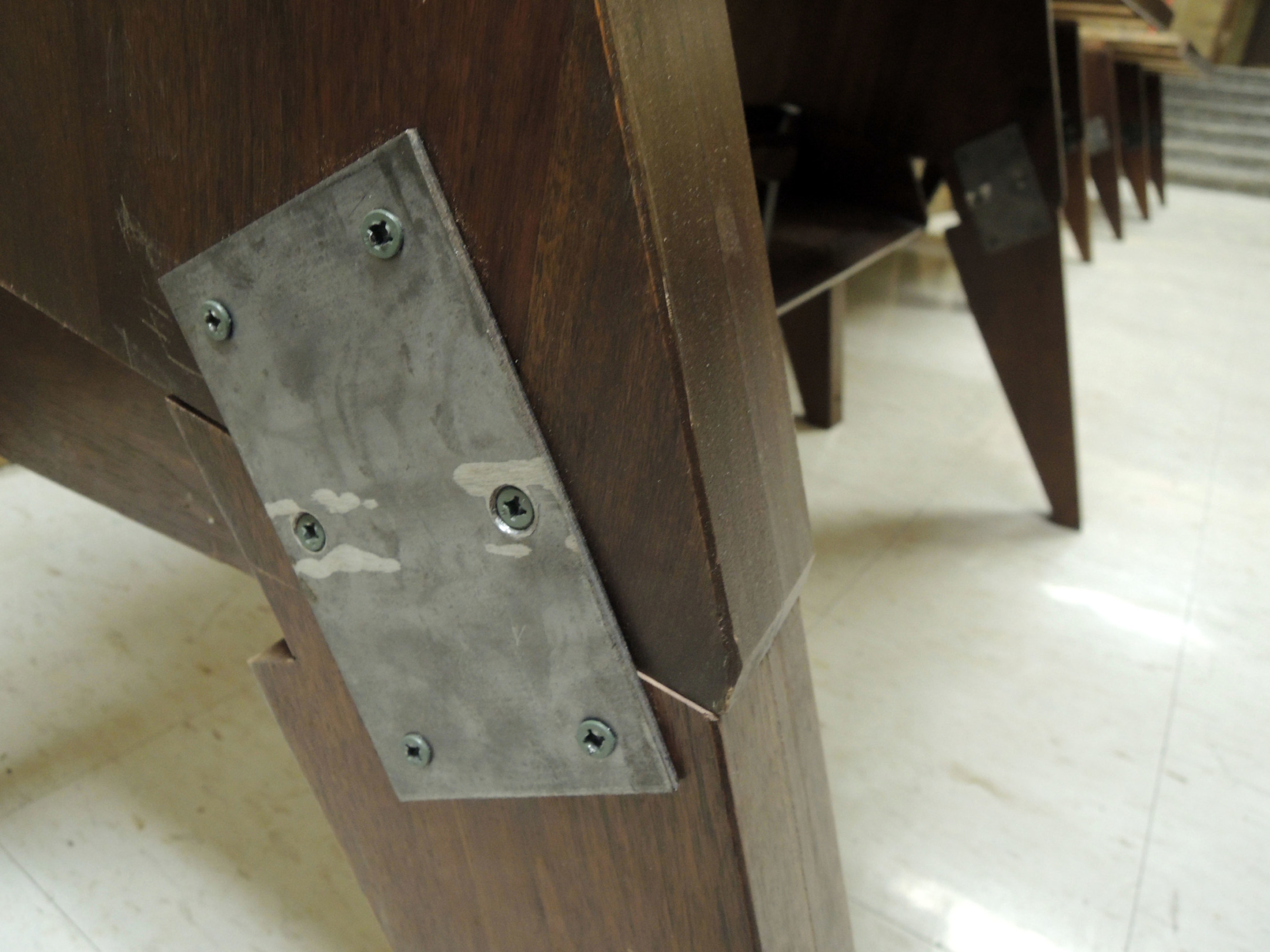
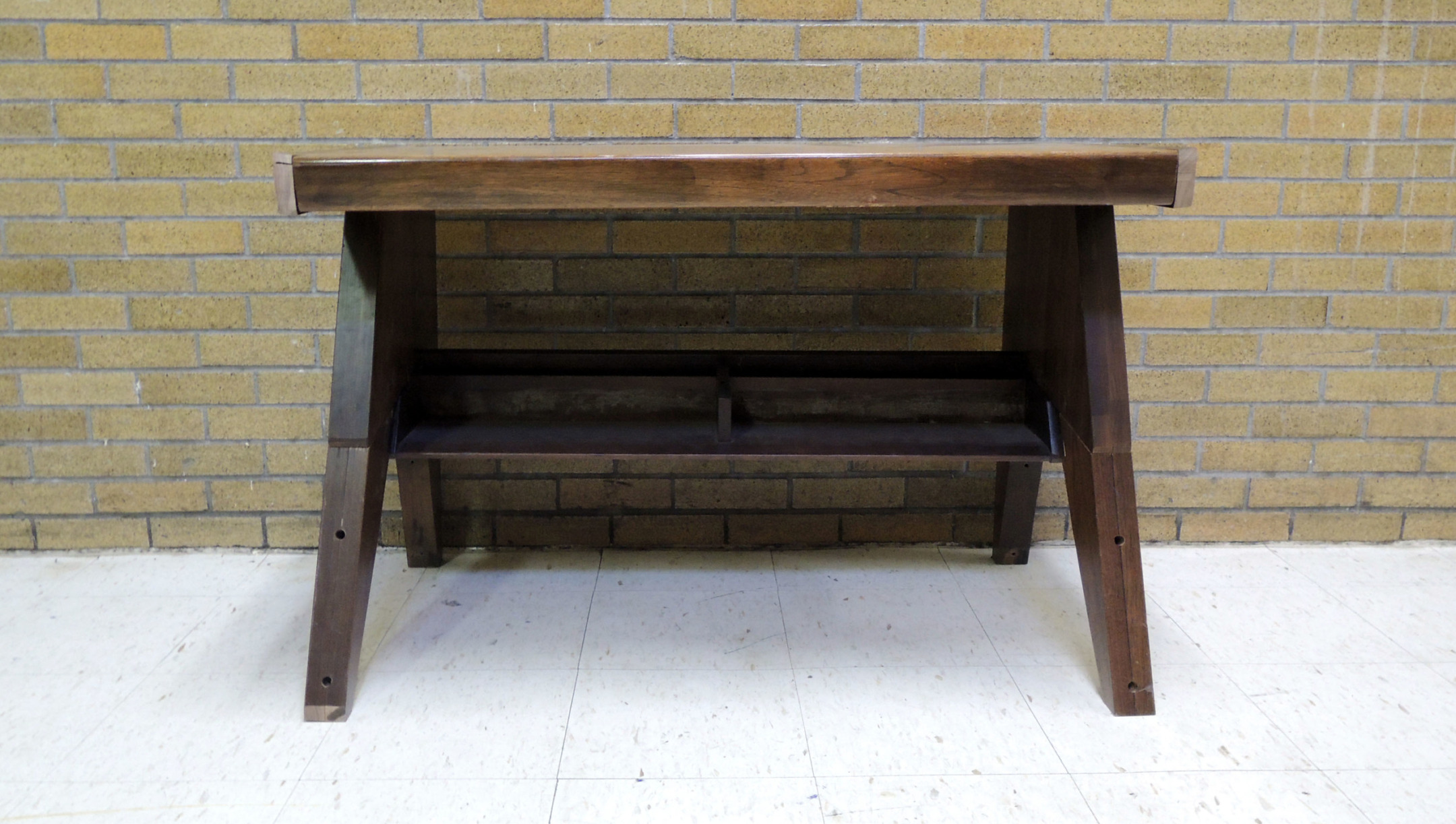
The concept of sustainability in design is one that we incorporate into all of our work at JEMA. It is present at the outset of a project when we push ourselves and our clients to consider the full life-cycle of a building. It is present in the search for interesting “upcycled” materials to use on a project. And it is present in the relationships we maintain when a project is completed.
Most importantly, it is present when we look for ways to make a lasting impact on our community through design.
